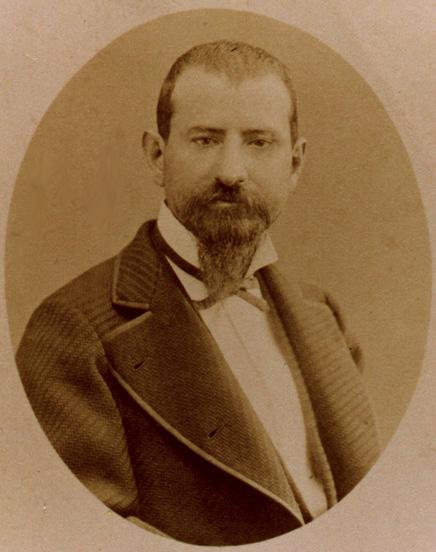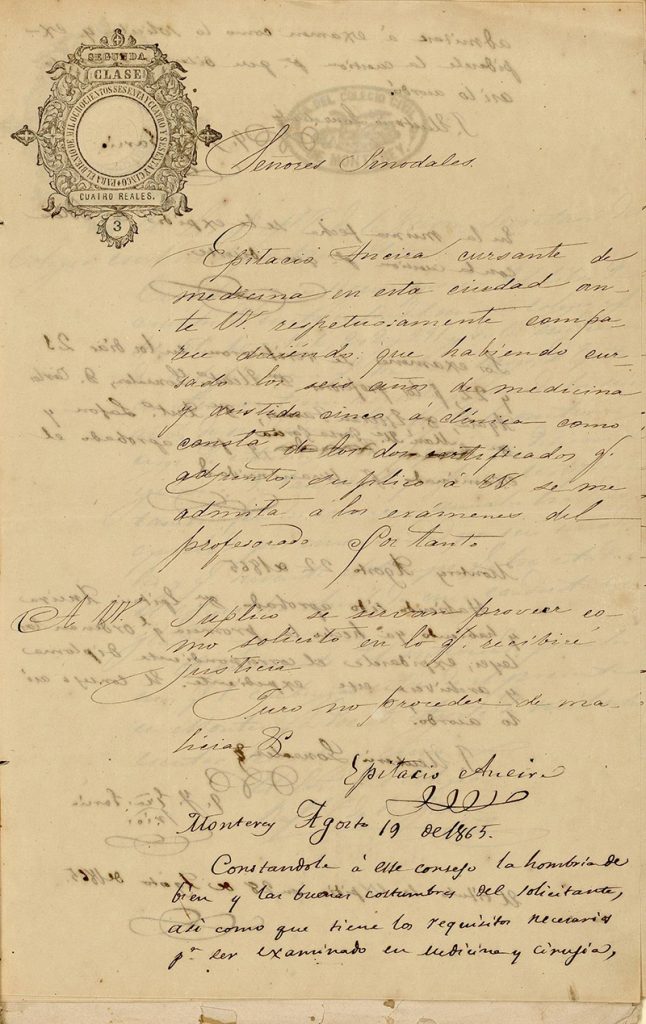Teaching of Medicine in Monterrey: its beginnings
Learn about the history of teaching Medicine in Monterrey
In the year 1826, the State Government published a Curriculum, proposing a chair of medicine, a project contained in two articles, which shows that said mandate would be entrusted to a doctor of great prestige, the classes would be taught in the Our Lady of the Rosary hospital and the resources to maintain this campus would be the responsibility of the state government, with the support of the municipal treasury.
35. For the time being, a medical professor, surgeon, virtuous, of talent, application, practice and scholar will be established in the hospital (with the consent of the authority under which he lives), endowed with eight hundred annual lifetime pesos and it will be seen if the City Council of This city for the utility that she perceives more than any other place in the State can assign another two hundred pesos.
36. Their obligations must be to reside in the capital every day to teach half an hour of medicine, and another half hour of surgery. On Thursdays teach only half an hour or anatomy or Chemistry or Botany as appropriate to the use of the students. On Sundays, teach half an hour some treatment of births and diseases of women and children, to midwives of conduct and aptitude. (General Archive of the State of Nuevo León, Official Newspaper, Monterrey, March 22, 1826.)
The curricular contents were briefly raised, these would have to be established once he clarified said project and had the doctor who was to found the medical school.
Unfortunately, due to political and economic instability, in 1828, this chair failed.
Upon the arrival of José Eleuterio González "Gonzalitos" to the state of Nuevo León, in the year 1833, he found that the city had a hospital, but not a school, which was responsible for the training of medical personnel.

Those who were interested in studying Medicine, had to travel to the capital of the country or to Guadalajara, to carry out their studies.
Gonzalitos was concerned about several issues, first of all, about the teaching of medicine and, secondly, that the exercise of the auxiliary branches of medicine had a scientific basis.

Therefore, in 1835 he opened the chair in Pharmacy, directed especially to those who attended or wanted to attend the apothecaries, enrolling students from Nuevo León, Tamaulipas and Coahuila.
On April 1, 1842, he inaugurated a chair where he intended to teach a full course of Medical Sciences, with a duration of six years, enrolling 5 students; Only one concluded his studies.
In December 1853, when the Hospital of Our Lady of the Rosary was closed, it began to be taught under the tutelage of the Health Council, a Department of Births, aimed at men and women.
On October 30, 1859, Dr. González finally founded the School of Medicine, located in Zaragoza and Ocampo streets, as part of the newly founded Civil College; career that would last six years, also teaching that of Pharmacy, in five.
The professors' plant was made up of six doctors who taught the following subjects:
- Manuel Garza García: Chemistry, Botany and Pharmacy
- José Eleuterio González: Anatomy, Operative Medicine and Obstetrics
- Carlos Ayala: Physiology and Hygiene
- Francisco González Carrasco: General and External Pathology
- José María Castillo: External Pathology
- Ignacio Garza García: Medical and Therapeutic Matters, Legal and Physical and Chemical Medicine applied to Medicine.
The initial enrollment in the medical degree was 15 students, of which five obtained their degree in 1865.
- The first graduates were:
- Ygnacio Martínez
- Juan de Dios Trevino
- Epitacio Ancira
- José Guadalupe Martínez
- Ramón García Pérez



Study Program 1859
Art. 10. The Medicine career will be done in six years, studying the subjects that are expressed in the following order:

| Year | Subjects |
| 1st. | Medical Physics and Chemistry |
| Botany | |
| English | |
| 2nd. | General and descriptive anatomy |
| Theoretical-practical pharmacy | |
| English | |
| 3rd. | Physiology and hygiene elements |
| Descriptive anatomy | |
| General and external pathology | |
| External clinic | |
| 4th. | Internal pathology |
| Operative medicine | |
| External clinic | |
| 5th. | Internal pathology |
| Medical and therapeutic matter | |
| External clinic | |
| 6th. | Legal Medicine |
| Obstetrics | |
| Internal clinic |
Museum Room "Dr. Ángel Óscar Ulloa Gregori"

